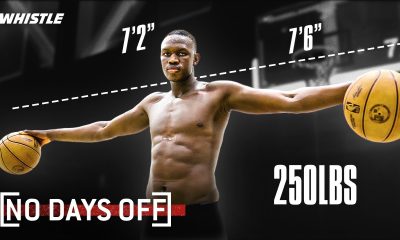NIL
Impact of Celebrity Endorsements on UFC
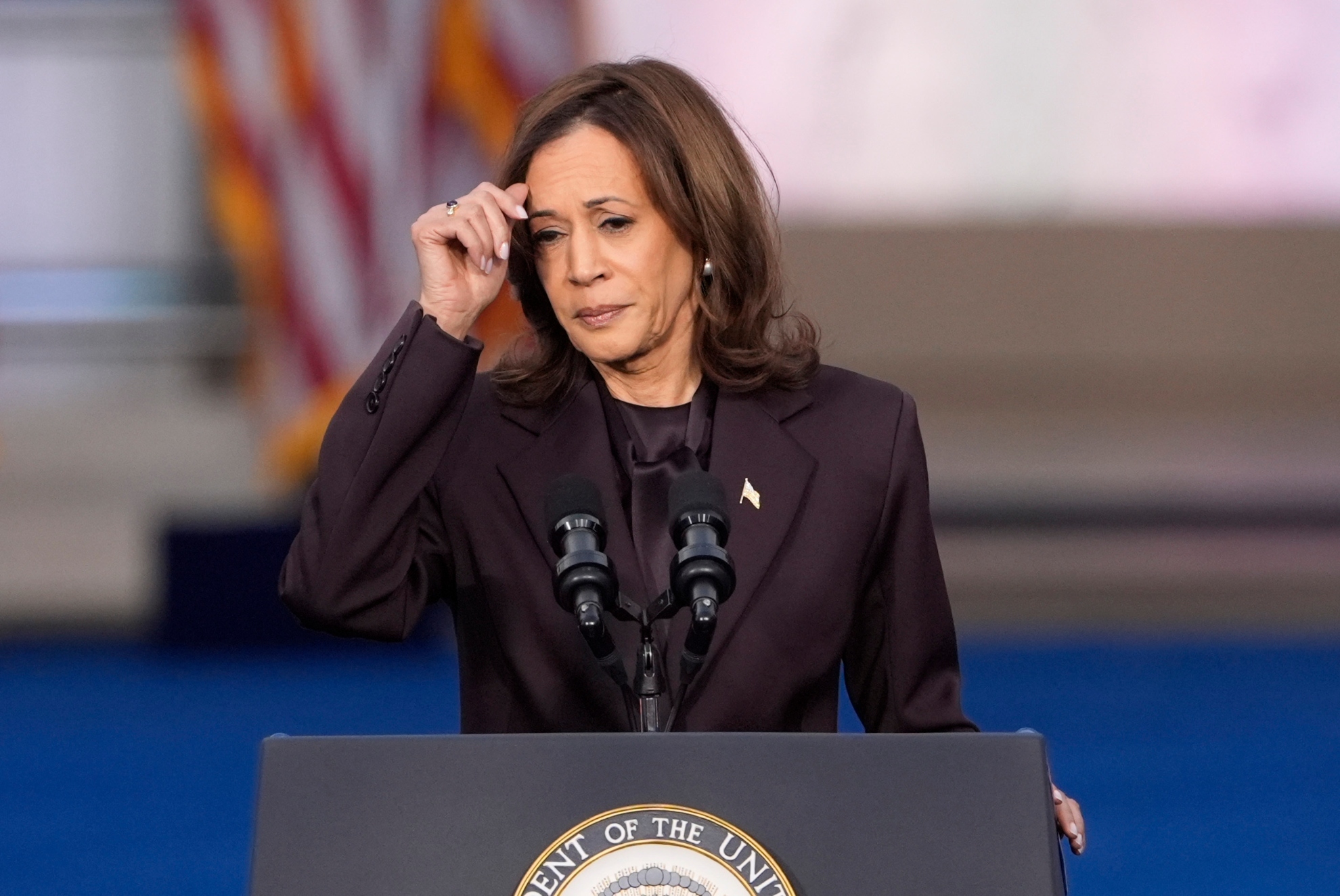

The Ultimate Fighting Championship (UFC) has grown into one of the most recognisable sports organisations in the world. So, you shouldn’t be surprised that it draws millions of fans to its events.
While these fans want to watch professional fighters landing punches and using tactics to win, the fact that it offers exciting betting opportunities also makes it more appealing to them.
The Business of UFC Ambassadors
Celebrities’ involvement in the UFC is multidynamic. They introduce new angles to the sport and increase their reach. As such, the organisation is even ready to splurge more to bring them on board. And their influence does not go unnoticed. Below are the top reasons why UFC uses celebrities as ambassadors:
Market Expansion
Involving famous personalities in the fight business is one of the sure ways to expand UFC’s market and increase its reach. It introduces new audiences outside the sport’s traditional demographics.
For instance, partnering with a renowned musician will help music fans become interested in UFC for the duration of the partnership. Eventually, the organisation sees some conversion.
Enhanced Brand Image
The business of fighting has different perceptions in various societies. Not everyone buys into the idea of fighting, even for sports. However, endorsing respected figures can change people’s perspectives and enhance the brand’s image.
For instance, footballer Christiano Ronaldo’s involvement can make some people see UFC more as a sport. Other endorsements can also position it as mainstream entertainment rather than a niche sport.
Increased Media Coverage
The media pays varying attention to different personalities. While the tabloid is some celebrity’s playground, it is also rare to see UFC news except in sports and general newspapers. However, the ground can shift with the involvement of an influential business personality. In such an event, UFC News can find itself in a top business newspaper, showing increased media coverage and amplifying the promotion’s reach.
Over the years, several celebrities have aligned themselves with the UFC, whether through partnerships or public support, thereby influencing the sport. Top celebrities that have endorsed the sports are:
- Cristiano Ronaldo: Ronaldo, one of the most influential footballers globally, has constantly supported the UFC . He has attended some of its events, notably those in Saudi Arabia. He has also openly commended the sport and its athletes, showing his enthusiasm.
- Donald Trump: The U.S. president, Donald Trump, is a visible supporter of the sport. Don’t be surprised that Trump and Elon Musk attended UFC 309 together. This action further solidifies the sport’s position as mainstream entertainment.
Cross-Promotion With Other Industries
Using celebrity ambassadors has helped the UFC gain more exposure in other industries, such as entertainment, music, and even fashion. Musicians, actors, and influencers often introduce their audiences to the sport, creating crossover appeal. This strategy has proven successful with collaborations involving figures like Snoop Dogg, Justin Bieber, and even Elon Musk expressing interest in UFC fights.
How Does UFC Celebrity Ambassadors Impact Fan Engagement and Betting?
Don’t be surprised that the celebrity influence on the UFC cuts across affiliated activities like UFC sports betting. As such, celebrity endorsement can tilt the stakes in sports betting.
Celebrity influence can be biased, and this can shift the bias toward whoever the celebrity is supporting. In such times, fans may ditch the necessary analytical assessments and simply pitch their tents with their favourites.
Furthermore, the UFC often involves renowned bookmarkers and casinos in its ambassadorial business. An example is the UFC’s partnership with DraftKings, which started in 2021. This five-year contract makes DraftKings the official sportsbook and daily fantasy partner of the UFC in the U.S. and Canada.
Similarly, the UFC partnered with betting platforms. UFC ambassadors, like the middleweight champion Isreal Adesanya, have collaborated with online betting platforms. These partnerships often promote exclusive offers, including promotions featured in the no deposit bonus list , which attract new players looking for risk-free opportunities.
Another instance of such collaborations is UFC’s multi-year partnership with Roobet.fun , announced in 2023. As such, UFC’s partnership has multi-dynamic influences on betting and fan engagement due to their varieties.
Biggest UFC Ambassadorial Deals
The UFC has witnessed some high-profile ambassadorial deals. One such is the UFC’s partnership with DraftKings. Also, celebrity host and reporter Meghan Olivi of Fox Sports earns a massive annual salary of $100,000 for reporting on and hosting UFC events.
These partnerships have influenced not only the UFC but also the general sports marketing industry. They have further solidified the integration of betting into mainstream sports. The partnership with betting platforms has made it easy for the UFC to integrate betting into normal sports viewing experiences.
With the increased partnership with crypto-betting platforms, cryptocurrency is now becoming a staple in the industry. It is no wonder that crypto enthusiasts like Donald Trump openly attend UFC events. Other influences include cross-platform promotion, innovative digital engagement, and catalysts for new sponsorship models and revenue streams.
Conclusion
Celebrities serve as a bridge between the UFC organisation and the larger world. Past successful collaborations have removed the question of whether UFC celebrity deals will work. Now, the focus is on the future of these deals and whether UFC will continue to collaborate with celebrities.
Judging by previous results, the future of UFC’s ambassadorial business remains robust. This will even open more avenues for generating revenue while enhancing the organisation’s appeal across sectors like media, merchandising, and digital content.
The post Impact of Celebrity Endorsements on UFC appeared first on BlackSportsOnline .
NIL
High School Football Recruits Now Command Six- and Seven-Figure Compensation in Revenue-Sharing Era
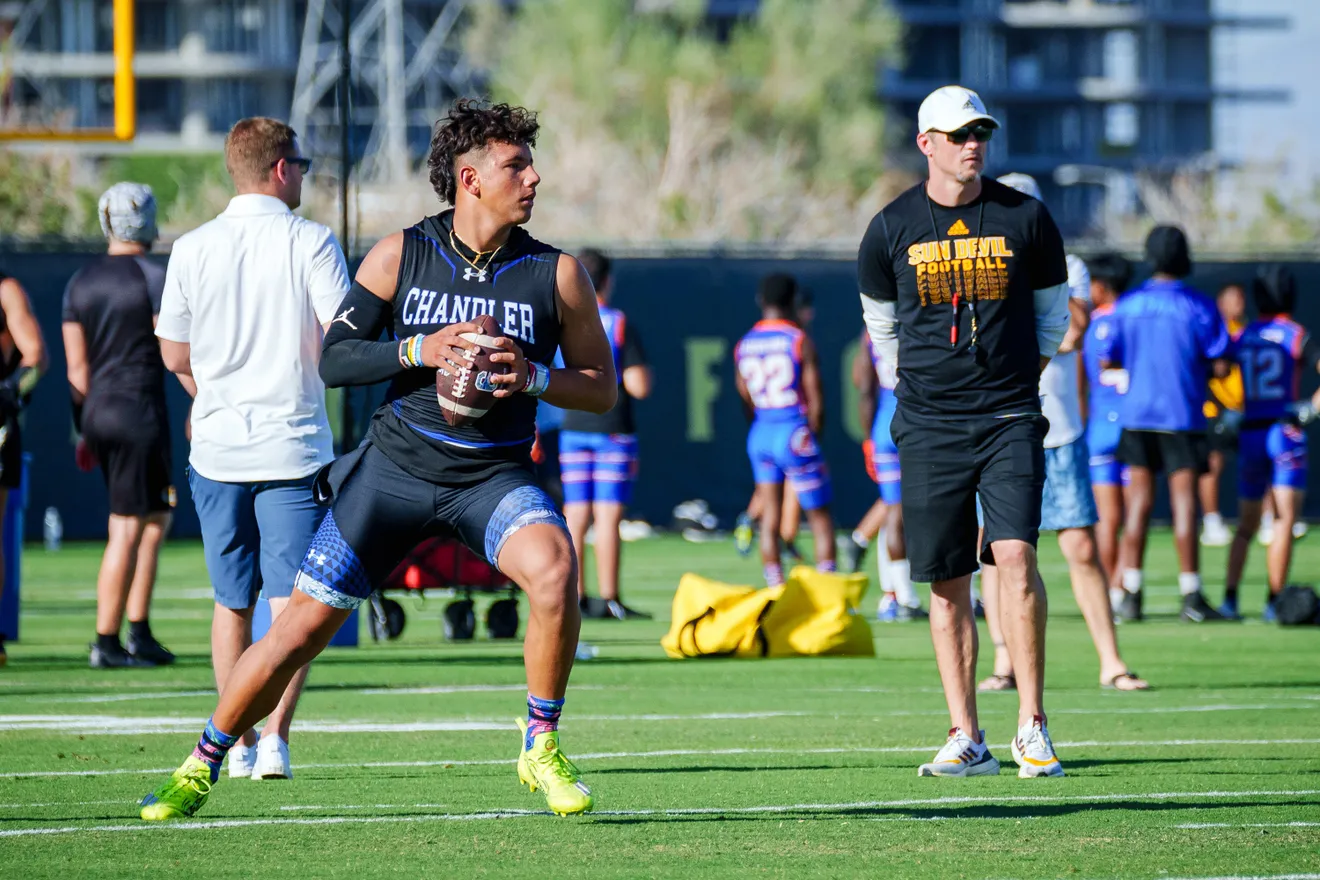
Key Takeaways
- Five-star quarterbacks typically receive between $750,000 and $1 million annually under new revenue-sharing contracts, while baseline Power 4 QB signees start between $100,000 and $300,000
- Elite offensive linemen can command $700,000 or more, with Miami’s top-ranked tackle commit Jackson Cantwell expected to receive over $2 million in 2026
- Most Power 4 football roster budgets range from $13 million to $15 million, while Group of 5 programs operate between $1 million and $10 million, with the majority below $5 million
- Only an estimated 5 percent of high school recruits sign multi-year deals, with quarterbacks and offensive linemen receiving them most frequently
- Some Power 4 recruits still sign for scholarship-only compensation, with programs terming these players as coming “free” to maximize budget flexibility
via: The Athletic | By Sam Khan Jr. and Antonio Morales
When the early signing period opens Wednesday for Class of 2026 recruits, most high school players will sign two documents instead of one. The first is a financial aid agreement that formalizes their scholarship commitment. The second, increasingly common among Power 4 recruits, is a revenue-sharing contract that details how much their school will pay them directly.
This marks a fundamental shift in college athletics compensation. Following the House v. NCAA settlement, schools can now pay players directly through revenue-sharing agreements, separate from the third-party name, image and likeness (NIL) deals that have been the primary compensation method since 2021.
To understand what recruits actually earn, The Athletic surveyed general managers, personnel staffers and agents across college football, all granted anonymity for candor. The findings reveal a complex market where recruiting rankings, position, physical readiness and institutional resources create dramatic variations in compensation.
What Elite Quarterbacks and Linemen Command
Power 4 quarterback recruits lead compensation tiers, mirroring the premium placed on the position at higher levels of football. Five-star quarterbacks typically secure between $750,000 and $1 million annually, according to three industry sources interviewed by The Athletic.
The baseline for Power 4 quarterback signees starts between roughly $100,000 and $300,000, with rankings driving the range upward. One agent noted that a top-150 quarterback in the 2026 class is receiving between $300,000 and $400,000 in his first year because he’s not expected to start immediately at his committed school.
Michigan freshman Bryce Underwood, the top recruit in the 2025 class, represents an extreme outlier with a multi-year deal worth upwards of $10 million. Sources described this as exceptional, driven by Underwood’s status as a consensus No. 1 recruit widely expected to start immediately.
Offensive and defensive linemen attract similarly substantial offers, though compensation depends heavily on physical development. “If you’re talking about a developmental player it could be $100,000 to $400,000-$500,000 (for offensive linemen),” a Power 4 personnel staffer told The Athletic. Defensive linemen fall into similar ranges, though edge rushers typically receive slightly less than interior linemen.
Upper six-figure and seven-figure offers aren’t unusual for five-star linemen. “Seven-hundred (thousand), that’s the number for a premium tackle,” a Power 4 personnel director said, adding that keen evaluators can still find quality prospects for half that amount.
Texas Tech’s commitment from Felix Ojo, the No. 2 offensive tackle nationally, came with a three-year deal paying $775,000 annually, a school source confirmed to The Athletic.
Position Value Reflects Playing Time Projections
Receivers occupy the next compensation tier because they can contribute immediately. “We have receivers as freshmen who are making $300,000 to $400,000 because you can play right away at a much higher clip than offensive linemen,” one agent explained. “You’re paid closer to the starting market at receiver because teams are more confident that they can play you right away.”
Receivers who aren’t immediate contributors typically fall into the high five-figure or low six-figure range. Cornerbacks follow similar compensation scales, with pay tied directly to college readiness upon arrival.
Running backs, tight ends and safeties comprise a third tier, with compensation starting in the mid-to-high five figures and reaching around $200,000. Elite players at the top of their position can exceed these ranges significantly. USC tight end commit Mark Bowman, ranked No. 3 at his position, is believed to be receiving a multi-year deal worth above seven figures annually, according to On3.
One Power 4 general manager operates by a simple formula: whatever a top-tier starter receives in the transfer portal, the high school equivalent should cost roughly half as much.
Multi-year contracts remain relatively rare for high school prospects. An agent estimated just 5 percent of high school recruits sign multi-year deals, with quarterbacks and offensive linemen most likely to receive them. “We see more two-year deals for O-linemen because it’s understood that you’re going to have to develop physically in Year 1,” the agent said.
The “Free” Player Strategy and Budget Realities
Despite the compensation trend, some recruits still sign for scholarship-only deals. Industry insiders term these “free” players, meaning they receive no additional NIL or revenue-sharing money beyond their scholarship.
One Power 4 general manager with a roster budget exceeding $20 million said three scholarship recruits joined his program for free this summer. A second personnel director confirmed his incoming class also includes several free players.
This approach is more common at non-blue-blood Power 4 programs with tighter resources. “Everyone knows everyone else is getting paid so they want a little piece,” a Power 4 personnel director said. “Now not everyone’s six figures, but everyone’s getting something.”
One Power 4 assistant coach questioned whether every high school recruit warrants extra compensation beyond scholarship. Projecting teenager development remains unpredictable, making it difficult to hit on more than half of any recruiting class.
Most Power 4 athletic departments operate at or near the revenue-sharing cap of $20.5 million, with 65 to 75 percent allocated to football rosters. Power 4 football roster budgets typically range from $13 million to $15 million, with top spenders exceeding $25 million.
Group of 5 Programs Take Different Approach
The Group of 5 landscape looks dramatically different. No G5 programs operate near the revenue-sharing cap. Most G5 roster budgets in 2025 ranged between $1 million and $10 million, though the majority stayed below $5 million.
This resource gap means G5 recruits typically receive annual compensation in the five-figure range, if they’re paid at all. Top G5 recruits might reach upper five figures. One agent noted that $3,000 monthly for a G5 recruit isn’t uncommon.
With limited budgets, these schools prioritize retaining current players and portal additions over high school recruiting investment. “Unless you’re a QB or special kid, I don’t think you’re gonna give kids six figures (out of high school),” a Group of 5 general manager said. “It’s such a gamble with high school kids. There’s just so many things you can’t account for when they make the transition to college. We’ll pay you more if you come in and earn it.”
Strategic Value of High School Recruiting Investment
Portal spending attracts more attention because proven players command higher prices. “You’re paying for snaps,” the Power 4 general manager explained.
However, industry sources unanimously agree that landing quality high school recruits remains essential for program building, even at increased cost. “You feel better paying a college kid who you’ve seen play and has snaps and starts and all that stuff than you do a high school kid,” a second Power 4 personnel director said. “But the high school kid you almost have to pay a recruitment fee because there’s all these other schools bidding on them.”
The tension emerges when new recruits sometimes earn more than established players on the two-deep roster. Yet hitting on high school recruits costs less long-term than building primarily through the portal. Homegrown recruits often remain more comfortable at their school, having bought into coaches and schemes, sometimes accepting less compensation to stay.
“It’s like the NFL Draft,” one personnel director said. “No one wants to live in free agency. You want to live in the draft, build your core there and supplement it with positions that are needs (in the portal).”
When bidding wars occur, market dynamics take over. “The market is what the highest person is willing to pay,” the director noted.
What This Means for College Football’s Future
The revenue-sharing era has created transparent compensation structures that vary dramatically by position, recruiting ranking, physical readiness and institutional resources. The disparity between Power 4 and Group of 5 programs will likely widen as top talent follows larger budgets.
Programs must now balance paying for proven portal talent against investing in high school development. Those that successfully identify undervalued high school prospects while strategically supplementing through the portal will likely find competitive advantages.
The market remains fluid as programs, agents and recruits navigate these new dynamics. As one agent summarized: “The reality is any school is gonna pay any amount of money that they deem worth it. If a school deems a guard worth $750K, they’ll pay it.”
This analysis is based on reporting by Sam Khan Jr. and Antonio Morales for The Athletic, published December 2, 2025.
Photo: USA TODAY
YSBR provides this content on an “as is” basis without any warranties, express or implied. We do not assume responsibility for the accuracy, completeness, legality, reliability, or use of the information, including any images, videos, or licenses associated with this article. For any concerns, including copyright issues or complaints, please contact YSBR directly.
About Youth Sports Business Report
Youth Sports Business Report is the largest and most trusted source for youth sports industry news, insights, and analysis covering the $54 billion youth sports market. Trusted by over 50,000 followers including industry executives, investors, youth sports parents and sports business professionals, we are the premier destination for comprehensive youth sports business intelligence.
Our core mission: Make Youth Sports Better. As the leading authority in youth sports business reporting, we deliver unparalleled coverage of sports business trends, youth athletics, and emerging opportunities across the youth sports ecosystem.
Our expert editorial team provides authoritative, in-depth reporting on key youth sports industry verticals including:
- Sports sponsorship and institutional capital (Private Equity, Venture Capital)
- Youth Sports events and tournament management
- NIL (Name, Image, Likeness) developments and compliance
- Youth sports coaching and sports recruitment strategies
- Sports technology and data analytics innovation
- Youth sports facilities development and management
- Sports content creation and digital media monetization
Whether you’re a sports industry executive, institutional investor, youth sports parent, coach, or sports business enthusiast, Youth Sports Business Report is your most reliable source for the actionable sports business insights you need to stay ahead of youth athletics trends and make informed decisions in the rapidly evolving youth sports landscape.
Join our growing community of 50,000+ industry leaders who depend on our trusted youth sports business analysis to drive success in the youth sports industry.
Stay connected with the pulse of the youth sports business – where industry expertise meets actionable intelligence.
Sign up for the biggest newsletter in Youth Sports – Youth Sports HQ – The best youth sports newsletter in the industry
Follow us on LinkedIn
Follow Youth Sports Business Report Founder Cameron Korab on LinkedIn
Are you a brand looking to tap into the world’s most passionate fanbase… youth sports?
Introducing Play Up Partners, a leading youth sports marketing agency connecting brands with the power of youth sports. We specialize in youth sports sponsorships, partnerships, and activations that drive measurable results.
About Play Up Partners
Play Up Partners is a leading youth sports marketing agency connecting brands with the power of youth sports. We specialize in youth sports sponsorships, partnerships, and activations that drive measurable results.
Why Sponsor Youth Sports?
Youth sports represents one of the most engaged and passionate audiences in sports marketing. With over 70 million young athletes and their families participating annually, the youth sports industry offers brands unparalleled access to motivated communities with strong purchasing power and loyalty.
What Does Play Up Partners Do?
We’ve done the heavy lifting to untangle the complex youth sports landscape so our brand partners can engage with clarity, confidence, and impact. Our vetted network of accredited youth sports organizations (from local leagues to national tournaments and operators) allows us to create flexible, scalable programs that evolve with the market.
Our Approach
Every partnership we build is rooted in authenticity and value creation. We don’t just broker deals. We craft youth sports marketing strategies that:
- Deliver measurable ROI for brand partners
- Create meaningful experiences for athletes and families
- Elevate the youth sports ecosystem
Our Vision
We’re positioning youth sports as the most desirable and effective platform in sports marketing. Our mission is simple: MAKE YOUTH SPORTS BETTER for athletes, families, organizations, and brand partners.
Common Questions About Youth Sports Marketing
Where can I sponsor youth sports? How do I activate in youth sports? What is the ROI of youth sports marketing? How much does youth sports sponsorship cost?
We have answers. Reach out to info@playuppartners.com to learn how Play Up Partners can help your brand navigate the youth sports landscape.
Youth sports organizations: Interested in partnership opportunities? Reach out to learn about our accreditation process.

NIL
Ed Orgeron hilariously differentiates between paying players with and without NIL
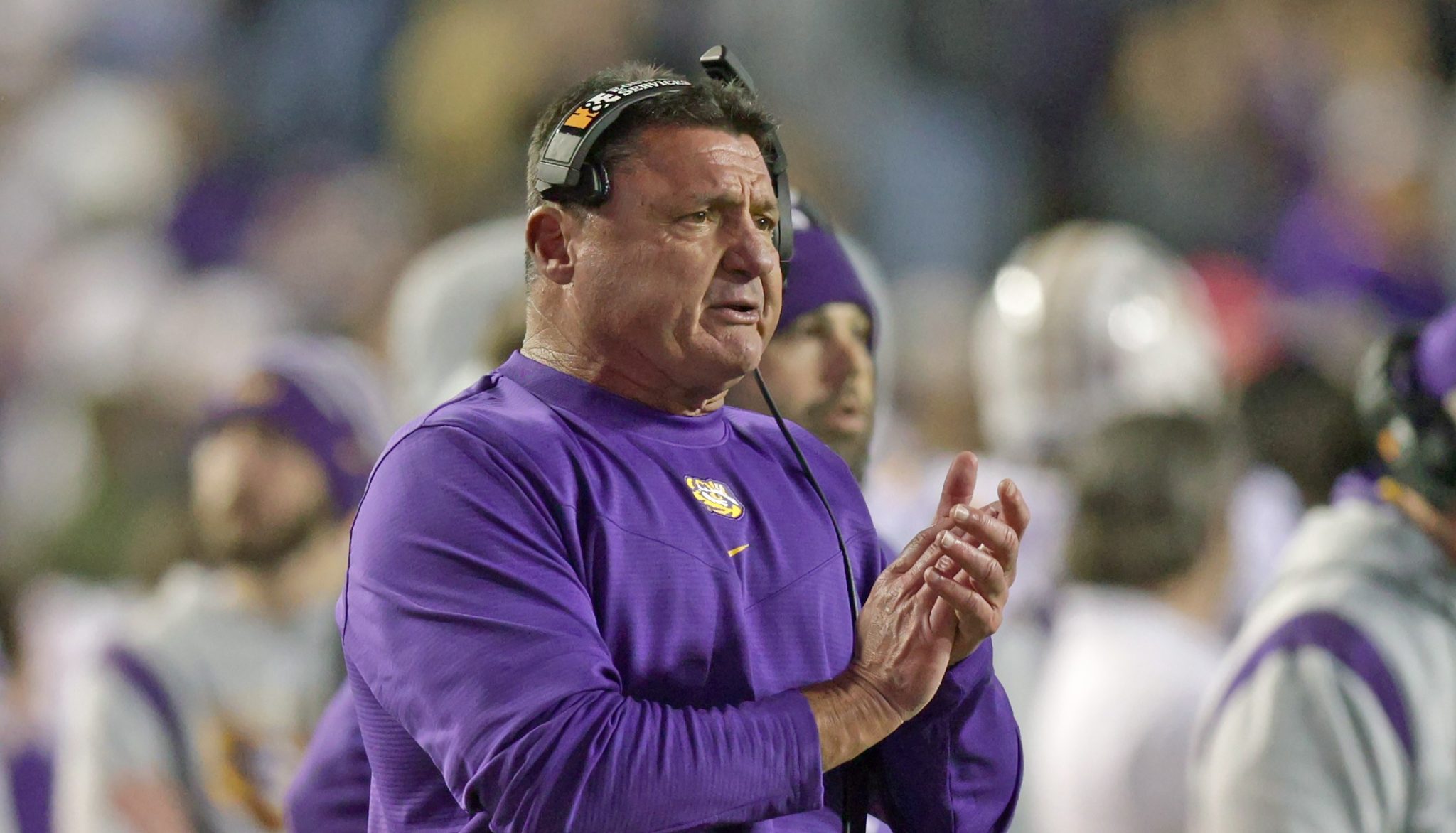
College football is rapidly changing, especially when it comes to player compensation. Ed Orgeron, though, doesn’t think he would have trouble adjusting to the NIL era.
Orgeron recently appeared on the Bussin’ With the Boys podcast. Host Taylor Lewan joked that “the SEC was NIL before NIL.” Orgeron did not push back and explained that coaching with legal ways to compensate players would only take a minor adjustement for him.
“Back then, we used to walk through the back door with the cash. Now, we just got to walk through the front door with the cash,” Oregon said, laughing along with Lewan and Will Compton.
Everyone knows the SEC was paying players before paying players was legal
Coach O with an incredible response on @BussinWTB pic.twitter.com/PvHvQK3Bdp
— Will Compton (@_willcompton) December 9, 2025
Orgeron, 64, has made it known that he is interested in a return to the sidelines. At this stage in the coaching carousel, Orgeron would likely be looking at an opportunity as an assistant position.
The former LSU head coach spoke with Jacksonville, Florida radio station 1010XL/92.5 FM last week. Orgeron revealed that he is living in Baton Rouge again because he did not want to sign another lease in Miami if he were to land a new coaching job.
In his radio interview, Orgeron spoke highly of new LSU head coach Lane Kiffin. The two worked together at USC and Tennessee, and Orgeron expressed interest in working alongside Kiffin again. Orgeron also said he’d be interested in joining his stepson, Tyler Spotts-Orgeron, who served under new Florida head coach Jon Sumrall at Tulane.
SEC fans everywhere are watching closely to see Coach O returns to the conference.
Andrew writes about sports to fund his love of live music and collection of concert posters. He strongly endorses the Hall of Fame campaigns of Fred Taylor and Andruw Jones.
NIL
Josh Pate names college football teams that were the biggest disappointments in 2025
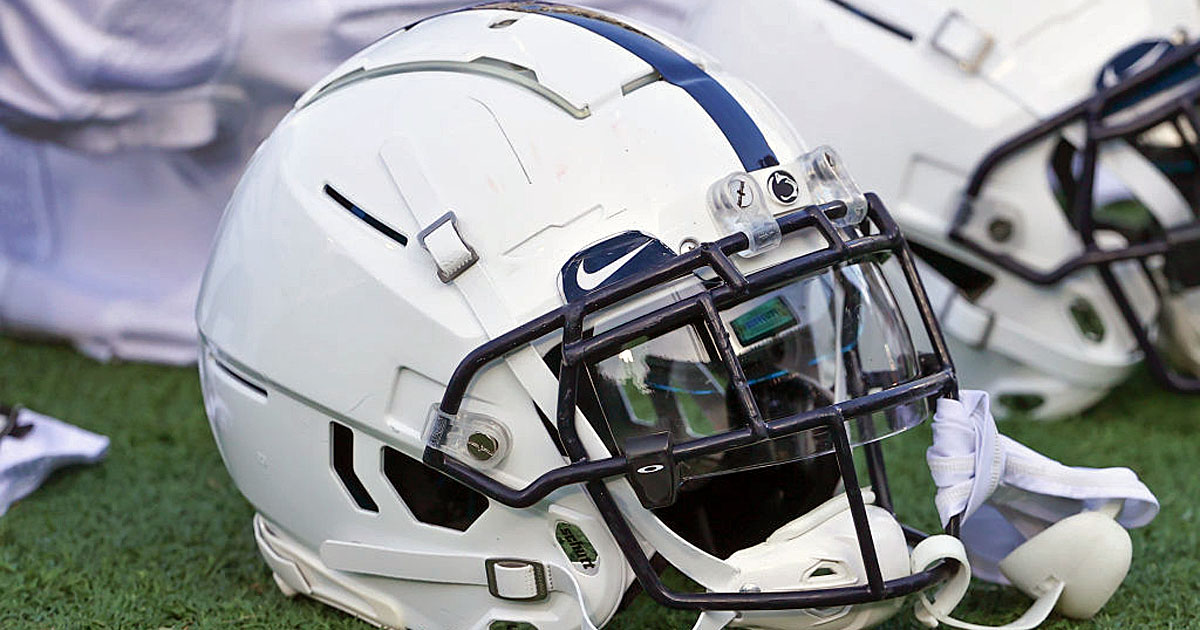
The 2025 season has come and gone, with all that remains crowing a champion following the College Football Playoff. But it’s not to early to label the biggest disappointments from the season. In fact, that’s exactly what college football analyst Josh Pate did on a recent episode of Josh Pate’s College Football Show.
He named the three most disappointing teams in the country. He did not pull punches.
All three came from Power Four conferences. The expectations differed for each of the three, but all three had at least some playoff hopes going into the year. Let’s dig in.
Clemson went into the year with a returning starter at quarterback in Cade Klubnik. He was a guy many thought could contend for the Heisman Trophy if all went well.
The defensive line, meanwhile, was loaded with elite talent that had some serious experience going into the year. There was talent at every level. Then it all went wrong. Pate explained.
Josh Pate: “Not everyone agreed with this, but I had the opinion that this was sort of maybe a last dance situation. Because I viewed 2026 and beyond as the edge of a cliff. From a roster certainty standpoint, I didn’t have a lot of confidence. So I looked at 2025 as the year they had to get it done.
“And not only did they not get it done, they imploded. They lost to LSU and they squeaked by Troy, then lost to Georgia Tech, then lost to Syracuse. When they lost to Syracuse that one was done. That was Steve Angeli Syracuse, that was before the quarterback got injured and ended the season. Syracuse housed them at home. And so they started the season 1-3 and it was just a bad, bad time. So that had to be my most disappointing team, but not my only disappointing team.”
Florida ended the 2024 season on a strong note, winning four straight games to reach eight wins under coach Billy Napier. Quarterback DJ Lagway was electric during that stretch.
So expectations were high for the program headed into 2025. The season never got off the ground, eventually resulting in the firing of Napier. Pate admitted he swung and missed on Florida with his preseason predictions.
Josh Pate: “I got a little taste of Florida at the end of last year and they convinced me to buy them, and I didn’t check the expiration date. I don’t know what else to say. Very, very poor shopping on my part. And they end up 4-8.
“And the worst part is DJ Lagway just never even remotely came close to what I thought he was. One of the things that will live in infamy was me doing my SEC quarterback preseason power ratings, which we may never do again, because I had Lagway No. 1 and he finished — I can’t believe that’s real — he finished with a 16-to-14 touchdown to INT ratio.”
Penn State was coming off a deep playoff run the year before and had a returning starting quarterback in Drew Allar. It also had a loaded backfield and had seemingly made strides to shore up a weakness at receiver with a nice transfer portal haul.
But the pressure seemed to get to Penn State early. And once it cranked up, it really cranked up. James Franklin was fired midseason and the season went off the rails. It was hard to see coming.
Josh Pate: “Think about what they were last year. They were in the semifinal. They were one play or so away going the other way of being in the national championship game and most of those pieces return and you’ve got a two-headed, 1,000-yard per tailback caliber backfield. Quarterback’s back again. We’ve got really good transfer portal talent infusion at wide receiver, which was one of the last remaining hurdles for this team. And then defense we just casually went and added Jim Knowles. All the signs were there.
“To the point where everyone said, ‘I don’t know how Penn State doesn’t make the playoff.’ Remember once upon a time for Penn State was they lose the Oregon game and the Ohio State game, they’re 10-2. That’s worst case. Finished just a few games short of worst case.”
NIL
Stephen A. Smith blasts historic college football program for skipping bowl game
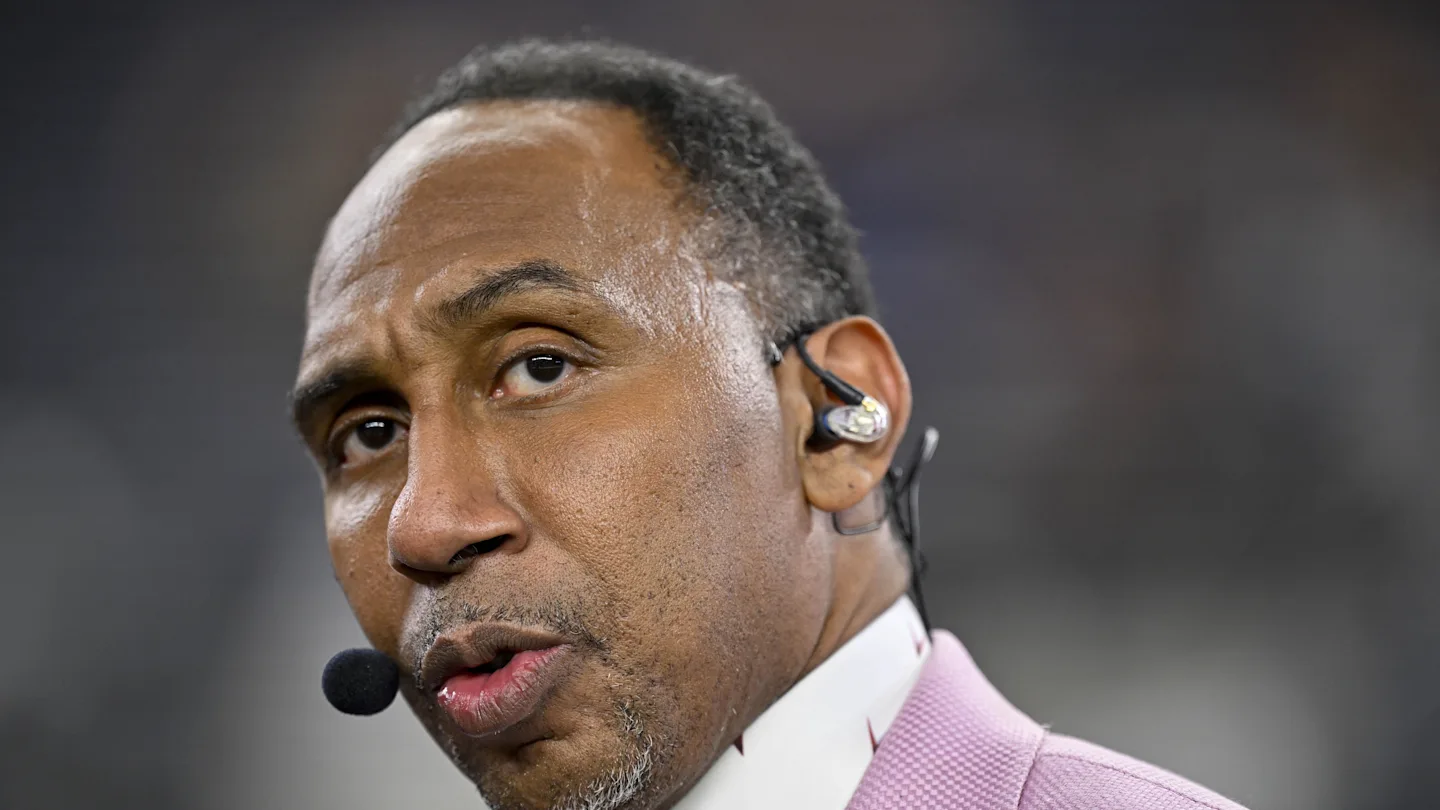
ESPN personality Stephen A. Smith is the man of a million opinions. But the events of the past week of college football had Smith digging deep to share his disdain. Not many years ago, bowl games were regarded as major prizes to be sought and enjoyed by fan bases. But in the era of an expanding College Football Playoff, the non-Playoff bowls are certainly taking a prestige hit.
No less than 10 teams turned down bowl berths in the events of last weekend. Yes, the majority of those teams declining spots were 5-7 teams that had already begun offseason preparations without consideration of a bowl appearance. But across the sport, bowl appearances were devalued by teams– whatever the reason– turning down bowls.
Stephen A. Drags Notre Dame
Notre Dame, after being knocked out of the CFP by a single slot, was by far the most significant team to decline bowl offerings. The Irish clearly felt they had earned a CFP spot and the program’s own social media release made clear that Notre Dame wasn’t interested in anything less. Stephen A. Smith was not impressed by that stance, and he shared his thoughts for the Irish on ESPN’s First Take.
Put on your big boy pants. Grow up and accept accountability for the role you played… here you are with your selfish asses, out there being an Independent… the one thing you can’t control, you want to whine and moan about it because your team lost head-up to Miami to open the season.
Stephen A. Smith
Independent Issues
The lack of a conference alignment certainly didn’t do Notre Dame any favors in the CFP donnybrook. While the school is a member of the ACC for most sports, Notre Dame has chosen to avoid conference alignment, presumably in regard to their own television deal with NBC Sports. Not having a conference left the Irish without the chance to improve their stock in the first weekend of December, as many other teams did.
Notre Dame’s Competition
That said, the Miami team that jumped Notre Dame in the CFP rankings also didn’t play over the weekend. Miami fell out of the ACC title picture and watched 8-5 Duke claim the league’s honors. Alabama did play, but with a 28-7 loss to Georgia, probably wished to have been anywhere else. Still, Alabama and Miami are in the CFP and Notre Dame remains out.
Many have agreed with Smith’s sentiments, claiming that Notre Dame’s stance in turning down a bowl bid was somewhere between silly and genuinely unfair to its own players. While others have been vociferous in their objection to Notre Dame’s CFP treatment, a large number have agreed with Smith’s sentiment about the need for some blue and gold “big boy pants.”

NIL
Troy Aikman Takes Subtle Shot at Big Ten Quarterback After NIL Controversy
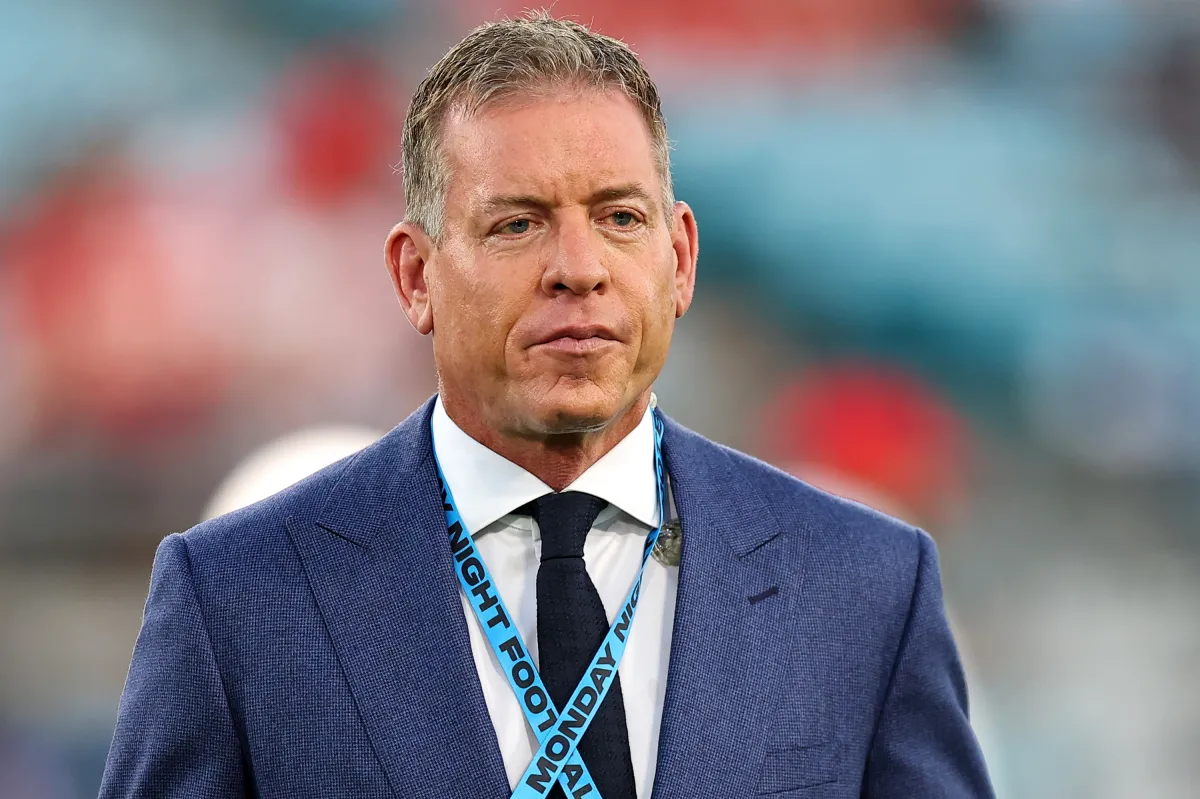
On Monday’s episode of the Sports Media Podcast with Richard Deitsch, Hall of Famer Troy Aikman explained why he’s “done with NIL.”
Aikman transferred from Oklahoma to UCLA for the 1987 and 1988 seasons, where he led the Bruins to back-to-back 10-win campaigns and set passing records before being selected No. 1 overall in the 1989 NFL Draft.
He went on to spend 12 seasons with the Dallas Cowboys, winning three Super Bowls (XXVII, XXVIII, XXX) and throwing for 32,942 yards and 165 touchdowns, before becoming a longtime TV analyst with FOX and later ESPN’s Monday Night Football.
Yet as one of UCLA’s most recognizable alumni, his involvement with the program may now be in question.
“I gave money to a kid, I won’t mention who. I’ve done it one time at UCLA, never met the young man. He was there a year, he left after the year. I wrote a sizable check, and he went to another school. I didn’t even get so much as a thank-you note. So, it’s one of those deals, to where I’m done with NIL. I want to see UCLA be successful, but I’m done with it,” Aikman said.
While Aikman did not name the player, many have already speculated that he’s referring to Dante Moore, who transferred from UCLA to Oregon in late 2023.
Read More: Texas A&M QB Marcel Reed Sends Clear Message Amid Transfer Portal Rumors
A generational high-school prospect, Moore arrived at UCLA as a 2023 freshman.
He completed 114-of-213 passes (53.5%) for 1,610 yards, 11 TDs, and nine INTs at UCLA before entering the transfer portal and landing at Oregon in December 2023.
After moving to Eugene, he emerged as Oregon’s starter and completed 227-of-313 passes for 2,733 yards, 24 TDs, and six INTs in the 2025 college football season.
Those numbers have made Moore a top NFL prospect and a marquee NIL asset.
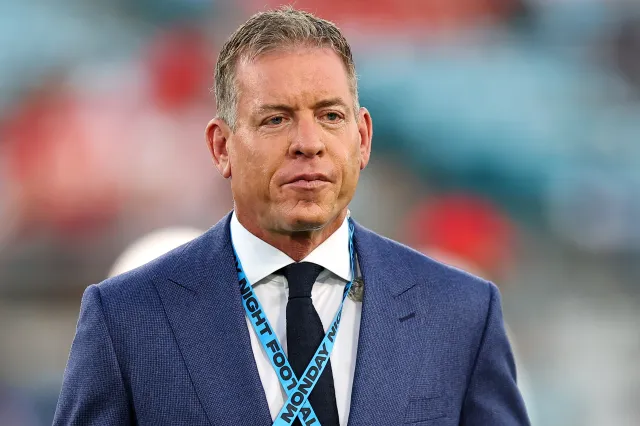
Read More: Ole Miss Hires Former Lane Kiffin Assistant After LSU Fallout
Moore’s market value rose quickly after the transfer and playing uptick.
Industry trackers list Moore among the higher NIL valuations for quarterbacks in 2025, with a reported value of $2.3 million, which ranks 13th among all college athletes.
This situation highlights the tension between modern donor influence, transfer portal mobility, and NIL commercialization, all of which are reshaping alumni expectations and making donor relationships more transactional.
NIL
Troy Aikman Won’t Donate NIL Money To UCLA After Transfer Snub
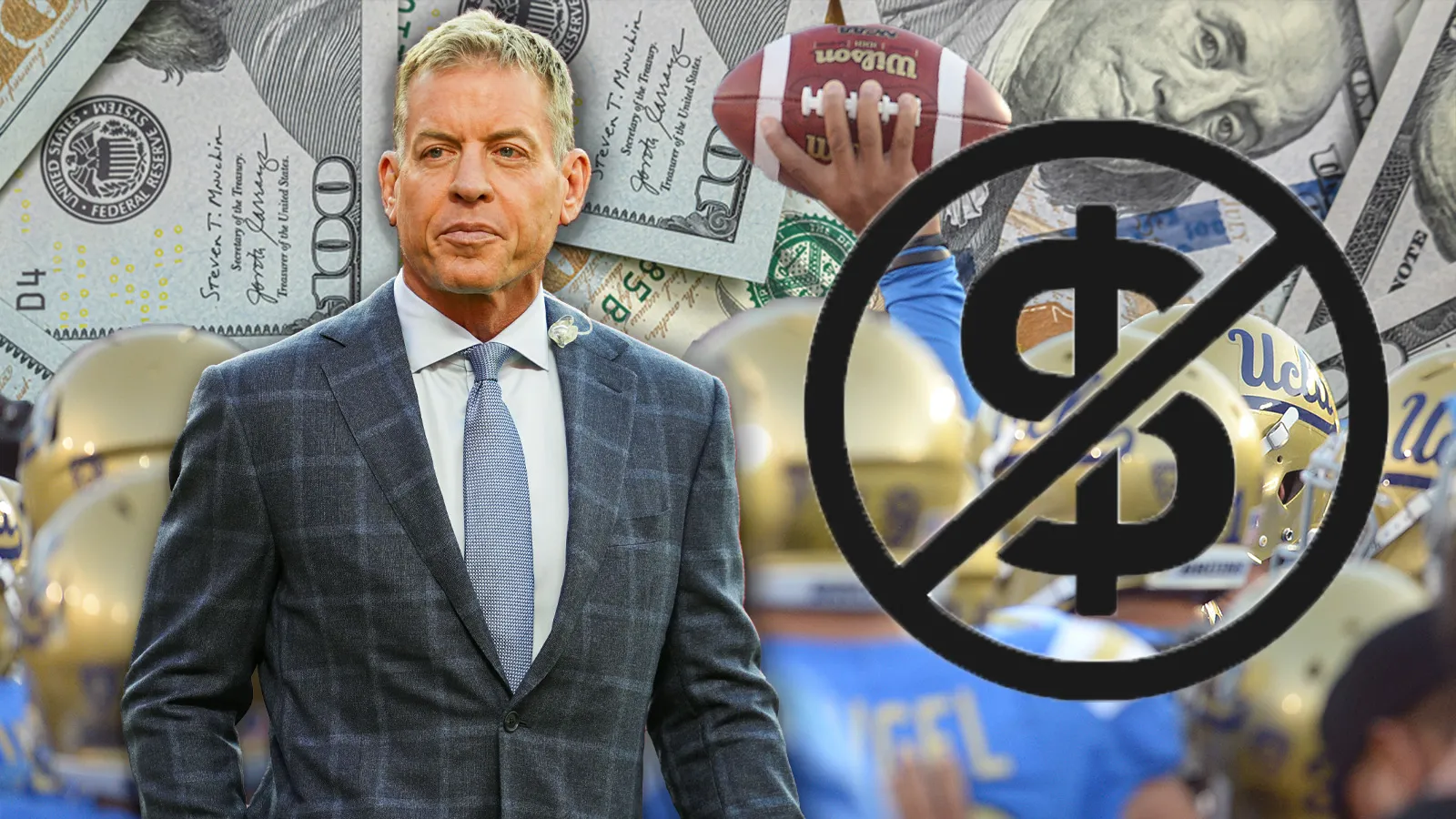

Troy Aikman will never give another dollar to UCLA for NIL. He gave money to a college football player who left the program after one season.
The Hall of Fame quarterback never met the player. The player never said thank you.
This is the reality of college football in 2025. A severe lack of regulation allows players to come and go as they please without any legitimate ties to one specific program or the financial compensation they received from that program.
Aikman, a three-time Super Bowl champion, played two years of college football at Oklahoma and two years of college football at UCLA. He himself is a former transfer. He is not against transfers.
However, the current system is very different from the 1980s.
Troy Aikman was forced to sit out the entire 1986 season because of the transfer rules from that era. Nowadays players can transfer willy nilly through the portal whenever they so choose, as many times as they want. They are (in most circumstances) immediately eligible to play that next season at their new school. And they are often getting paid along the way.
It was the correct decision to allow college athletes to profit from their Names, Images and Likenesses. Unfortunately, the decision to allow NIL opened the floodgates for unchecked financial inducements.
Recruiting used to be (more) about culture fit, facilities, playing time, coaching staff, etc. Now it’s (even more) about money.
Ed Orgeron recently said it best. The bag men walk through the front door instead of the back.
Everyone knows the SEC was paying players before paying players was legal
Coach O with an incredible response on @BussinWTB 😂😂 pic.twitter.com/PvHvQK3Bdp
— Will Compton (@_willcompton) December 9, 2025
Money was always involved to some extend but the numbers are inflated by multiple zeros. And it’s no longer just the top recruits.
Many of the top players in college football are making more than $1 million. Most Big Ten/SEC starters are making at least a few thousand. At least.
But if they do not like their current situation (or paycheck), they can just hit the portal in search of more money. There is nothing to stop them. They rarely have to return the money to the school at which they started.
Some schools are starting to fight back against this broken system. For example, Georgia recently filed a $390,000 lawsuit against Damon Wilson. Wilson transferred to Missouri. The Bulldogs want their money back.
Troy Aikman donated NIL money to UCLA.
This kind of lawsuit from Georgia is a newer thing. It is not the norm, yet.
Just ask Troy Aikman!
He recently spoke about his experience with Name, Image and Likeness during an appearance on the Sports Media podcast with Richard Deitsch. He will never donate money to an NIL fund again.
Aikman, a multimillionaire, gave money to the Bruins. It sounds like his donation was earmarked for a specific player.
The specific player said thank you for the money he received from Aikman. And then he left the program after one season. (For Aikman to be a quarterback makes me think it was Dante Moore but he wouldn’t say!)
“I gave money to a kid, I won’t mention who. I’ve done it one time at UCLA, never met the young man. He was there a year, he left after the year. I wrote a sizable check, and he went to another school. I didn’t even get so much as a thank you note. So, it’s one of those deals, to where I’m done with NIL. I want to see UCLA be successful, but I’m done with it.”
Aikman is all for player empowerment. As a former transfer himself, he sees the value of the portal and the opportunity to change your current situation if you are an athlete who is in need of a fresh start. Fine. It is the monetary aspect that he hopes will soon be fixed.
“There’s gotta be some leadership at the very top that kind of cleans all of this up,” Aikman said. “Starting with players that accept money. There’s gotta be some accountability and responsibility on their behalf, to have to stick to a program.”
Troy Aikman will not give another dollar for NIL until that happens. Sorry, Bruins.
-

 Rec Sports2 weeks ago
Rec Sports2 weeks agoFirst Tee Winter Registration is open
-

 Rec Sports2 weeks ago
Rec Sports2 weeks agoFargo girl, 13, dies after collapsing during school basketball game – Grand Forks Herald
-

 Motorsports2 weeks ago
Motorsports2 weeks agoCPG Brands Like Allegra Are Betting on F1 for the First Time
-

 Motorsports2 weeks ago
Motorsports2 weeks agoF1 Las Vegas: Verstappen win, Norris and Piastri DQ tighten 2025 title fight
-

 Sports2 weeks ago
Sports2 weeks agoTwo Pro Volleyball Leagues Serve Up Plans for Minnesota Teams
-

 Sports2 weeks ago
Sports2 weeks agoUtah State Announces 2025-26 Indoor Track & Field Schedule
-

 Sports2 weeks ago
Sports2 weeks agoSycamores unveil 2026 track and field schedule
-

 Motorsports2 weeks ago
Motorsports2 weeks agoRedemption Means First Pro Stock World Championship for Dallas Glenn
-

 NIL1 week ago
NIL1 week agoBowl Projections: ESPN predicts 12-team College Football Playoff bracket, full bowl slate after Week 14
-

 Sports2 weeks ago
Sports2 weeks agoTexas volleyball vs Kentucky game score: Live SEC tournament updates



















